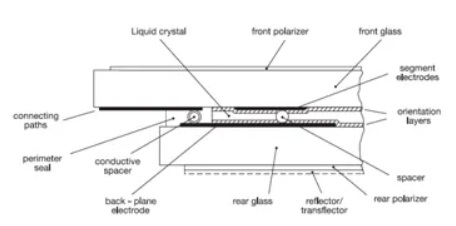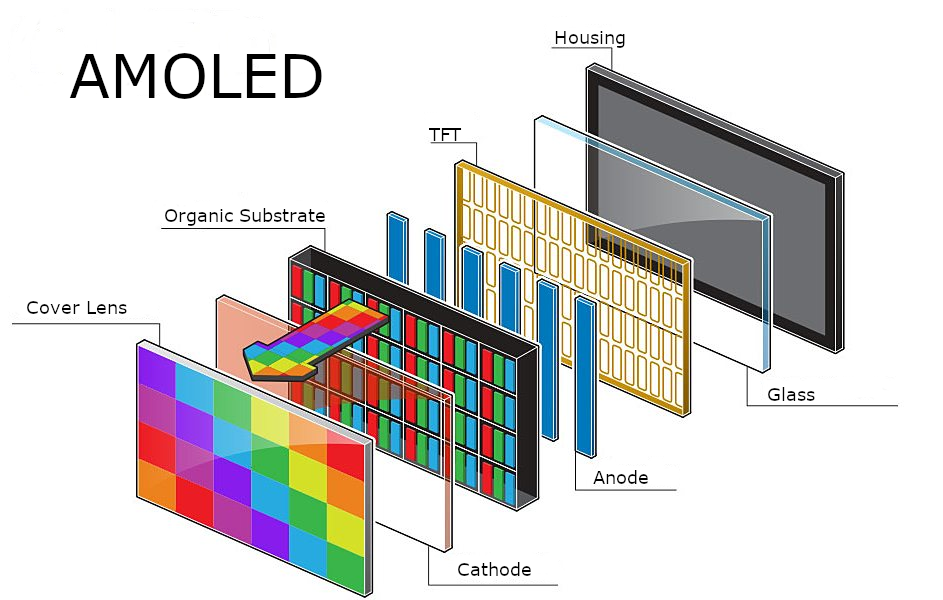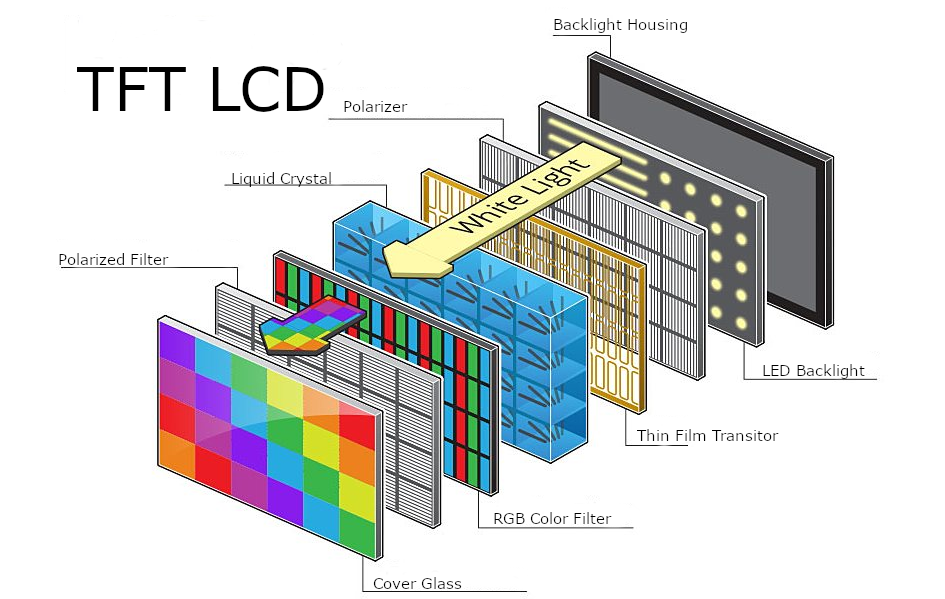In today's digital age, the screens of devices around us are constantly evolving, and OLED (Organic Light Emitting Diode) and LCD (Liquid Crystal Display) screens, as two mainstream technologies, exhibit significant differences in display performance, design flexibility, and application areas. This article will detail the differences and respective advantages and disadvantages of OLED and LCD screens, and how OLED has gradually dominated the market by leveraging its strengths.
1、 Differences in Emission Principles:
OLED Screens:

The emission principle of OLED (Organic Light Emitting Diode) is realized through the electroluminescent properties of organic materials. The basic emission principles of OLED are as follows:
(1)Organic Emitting Materials: The primary material in OLED screens is an organic compound, typically carbon-based large molecules, including fluorescent substances in the organic emitting layer. These organic molecules emit light under the influence of an electric field.
(2)Emission Layer Structure: OLED screens typically consist of multiple distinct organic layers, including the emission layer, electron transport layer, and hole transport layer. The emission layer is crucial and responsible for generating visible light.
(3)Electron Injection and Hole Injection: OLED is an electroluminescent device. By applying voltage to different electrodes, electrons are injected from the cathode into the organic layer, while holes are injected from the anode. These electrons and holes meet and recombine in the organic layer, releasing energy.
(4)Fluorescent Emission: The energy generated by recombination excites the electrons of organic molecules, causing them to transition to an excited state. When these electrons return to the ground state, they release photons, i.e., emit light. The color of emission is determined by the characteristics of the organic molecules used.
(5)Self-Emission: Unlike technologies like LCD that require a backlight source, OLED is a self-emitting technology, meaning each pixel emits its own light. This allows OLED to achieve true deep black colors without the need for additional backlighting.
LCD Screens:

LCD screens can achieve precise control of light by adjusting the arrangement of liquid crystal molecules and the brightness of the backlight source, displaying rich images and colors. This is the basic emission principle of LCD technology.
(1)Liquid Crystal Materials: The core of LCD screens is liquid crystal material, a special type of organic compound with properties between liquid and solid. Liquid crystal molecules can adjust their orientation under the influence of an electric field, thereby regulating the direction of transmitted light.
(2)LCD Screen Structure: LCD screens typically consist of two glass substrates coated with liquid crystal material. Between these substrates, there is a liquid crystal layer, and the substrates also have transparent conductive films. The liquid crystal molecules in the liquid crystal layer can rotate or align under the influence of an electric field, changing their transparency.
(3)Light Transmission and Blockage: When liquid crystal molecules are in a specific alignment state, they allow light to pass through, enabling light to traverse the entire liquid crystal layer and reach the front of the screen. In another alignment state, liquid crystal molecules twist the direction of light, blocking its transmission.
(4)Backlight Source: To display images, LCD screens require a backlight source. Common backlight sources are Cold Cathode Fluorescent Lamps (CCFL) or LEDs. This backlight source is positioned behind the LCD screen, emitting uniform white light that provides adjustable brightness to the liquid crystal molecules.
(5)RGB Filtering: In front of the liquid crystal layer, there is an RGB (Red, Green, Blue) color filter. By changing the transparency of each pixel, the LCD screen can adjust the degree of light transmission for different colors, displaying the desired colors.
It's worth noting that, unlike self-emitting technologies such as OLED, LCD requires a backlight source. Therefore, LCD is relatively limited in achieving true deep black and high contrast.
2、Pros and Cons of OLED Screens:

Advantages:
(1)Excellent Color Performance: OLED achieves true deep black because each pixel is self-emitting, eliminating the need for an additional backlight source. This results in outstanding color and contrast performance, presenting more vibrant and realistic images.
(2)Self-Emission: Each pixel in OLED is self-emitting and can independently emit light. Therefore, OLED excels in displaying dark scenes and high-contrast scenarios compared to traditional LCD screens.
(3)Thinner and Lighter: As OLED screens do not require a backlight source, they are relatively thinner and lighter, providing more design flexibility for slim and lightweight devices.
(4)Wider Viewing Angles: OLED screens perform better in viewing angles, offering viewers a consistent high-quality image over a larger range, while LCD has certain limitations in this aspect.
(5)Fast Response Time: OLED screens have faster pixel response times, helping reduce motion blur and making them excellent for watching videos and playing games.
Disadvantages:
(1)Relatively Shorter Lifespan: The organic materials in OLED screens gradually degrade over time with prolonged use, resulting in a relatively shorter lifespan. This degradation is more noticeable, especially when displaying high-brightness content.
(2)Susceptibility to Moisture and Oxygen: OLED is sensitive to moisture and oxygen. Excessive exposure can lead to screen damage. Therefore, special packaging is required to protect the screen.
(3)Relatively High Manufacturing Cost: The manufacturing cost of OLED screens is relatively high, contributing to higher prices of OLED devices compared to LCD devices.
(4)Potential Image Retention Issues: In some cases, OLED screens may experience image retention or burn-in issues, especially when displaying the same image for an extended period.
3、 Pros and Cons of LCD Screens:

Advantages:
(1)Relatively Longer Lifespan: LCD screens are relatively stable, with liquid crystal elements degrading at a slower pace, resulting in a relatively longer lifespan.
(2)Relatively Lower Manufacturing Cost: LCD technology is more mature, leading to lower manufacturing costs. This makes LCD devices more economically competitive in the market.
(3)Less Susceptible to Moisture and Oxygen: Unlike OLED, LCD is less sensitive to moisture and oxygen, making it less prone to environmental influences.
(4)Better Viewing Angles: LCD screens have a certain advantage in viewing angles, maintaining relatively stable image colors and brightness at larger viewing angles, especially on larger screens.
(5)Cost-Effective for Large Displays: Manufacturing large-sized LCD displays is cost-effective, providing a competitive edge in areas such as computer monitors and televisions.
Disadvantages:
(1)Limited Viewing Angles: Despite relatively good viewing angles, there still exists an issue of color shift at specific angles, especially on larger screens.
(2)Relatively Thicker: LCD screens require a backlight source, making them relatively thicker compared to some other technologies. This may not be suitable for devices with high demands for thin and lightweight design.
(3)Contrast Limited by Backlight: The presence of a backlight source limits LCD in achieving true deep black and high contrast, in contrast to OLED's self-emission technology.
(4)Power Consumption: LCD screens require the backlight source to be constantly active, leading to relatively higher power consumption, especially when displaying bright images.
(5)Limited Refresh Rate: LCD screens tend to have a lower refresh rate, which may be insufficient for applications that require higher refresh rates, such as gaming or virtual reality.
In summary, LCD technology excels in many aspects, particularly in terms of cost and large-sized displays. However, in specific application scenarios where higher contrast and thin design are essential, technologies like OLED may have advantages. This gradual dominance of OLED in the market is driven by its strengths.
The 8 inch displays might be affected and delay for an accident.
New iPhone 13 Series will use On-Cell OLED Displays. And it that will be launched in the second half of this year will be exclusively supplied by Samsung Display (SDC)
This is the project management of how sinocrystal handle your customized project relate to displays.
Discover the key factors to consider when choosing an LCD display for your project, including size, resolution, interface, brightness, and customization options from a factory-direct manufacturer.
Discover the latest innovations in rugged LCD displays for harsh environments — from extreme temperature resistance to sunlight readability and waterproof designs. Factory-direct manufacturing with full customization.
A complete guide to LCD display connection methods, including SPI, I2C, RGB, MIPI, LVDS interfaces and physical mounting options. Learn how to connect monochrome and TFT LCDs to your development board or product housing.
This week, we had the pleasure of hosting an esteemed international client at our LCD display manufacturing facility in Dongguan. Guided by our team, the client visited key production areas such as the fully automated COG bonding line, backlight assembly area, full lamination workshop, and final product aging test section. They highly appreciated our production capacity, strict quality control, and engineering expertise. This visit strengthened mutual trust and set the stage for future collabora